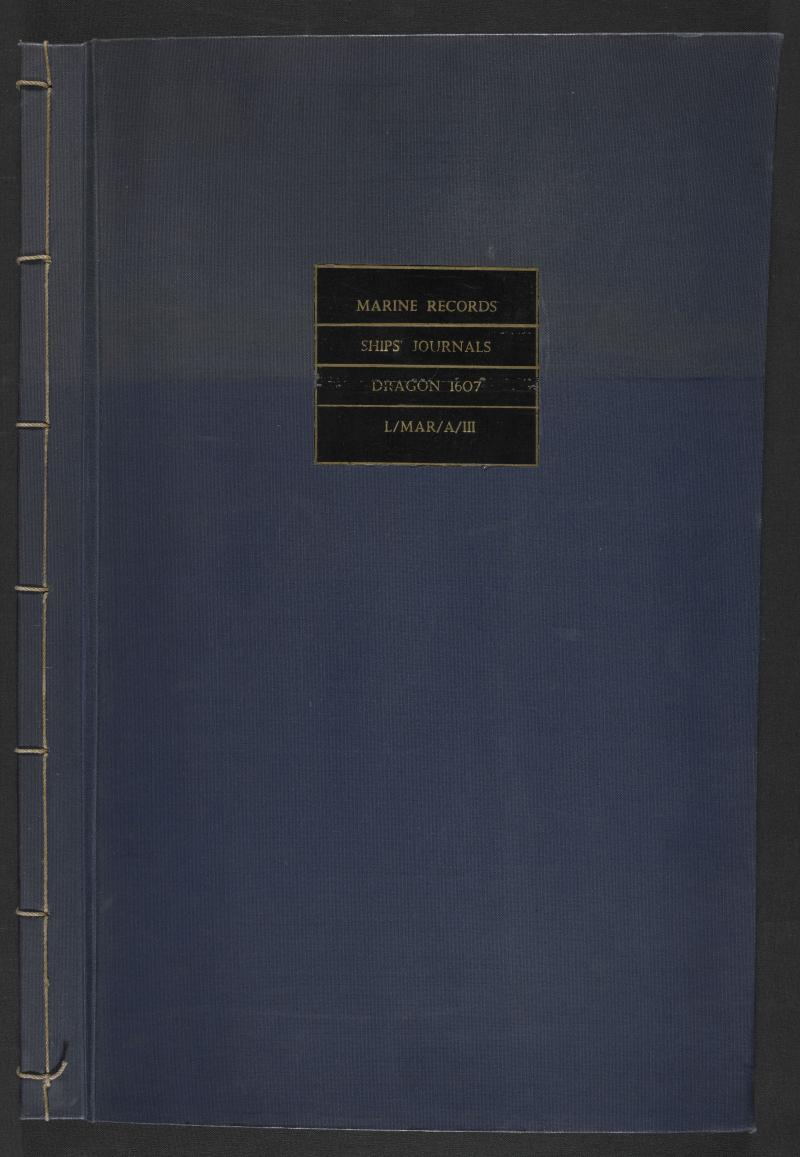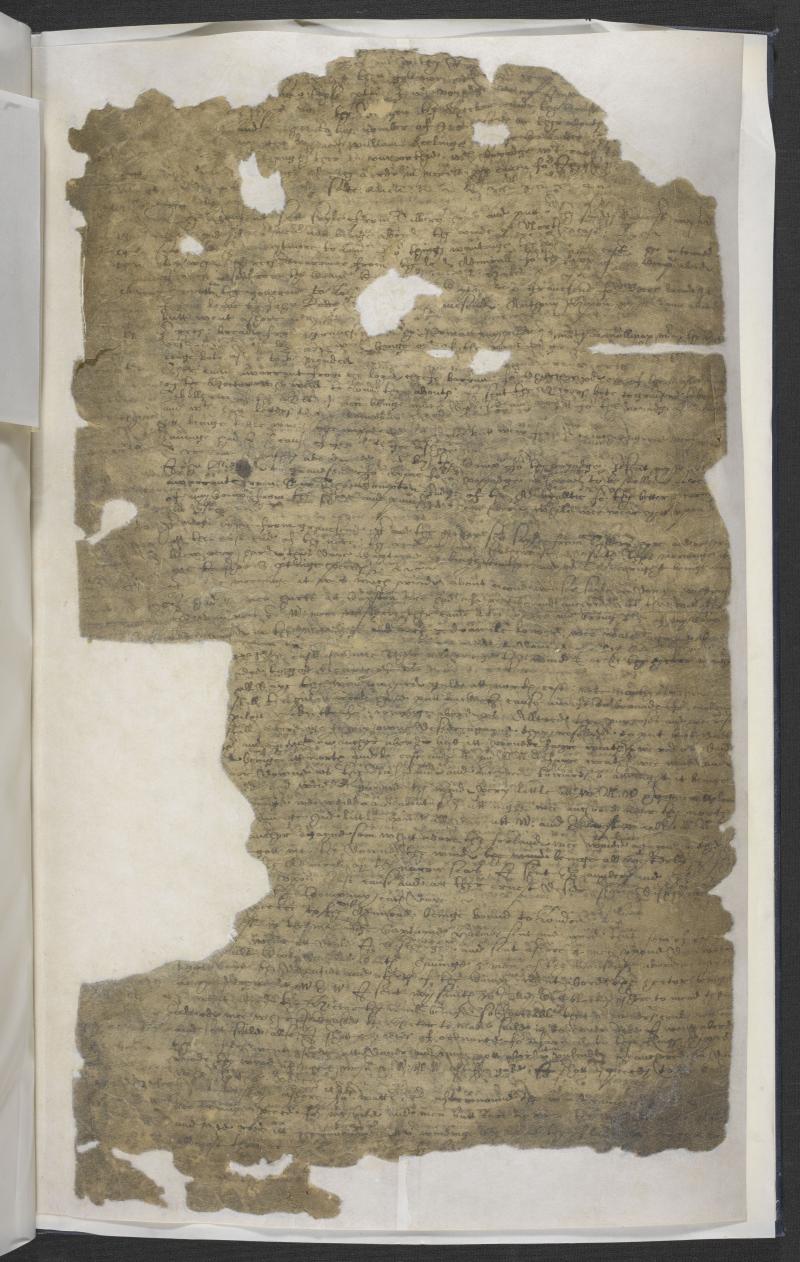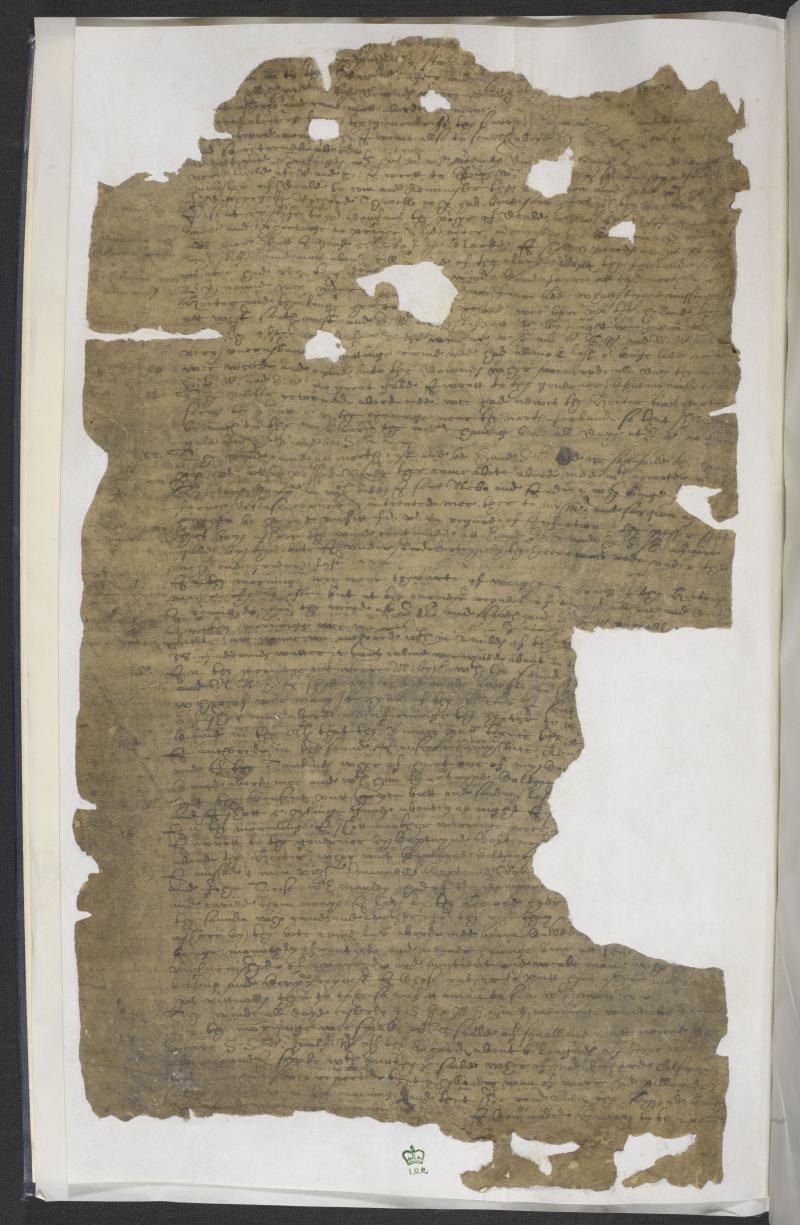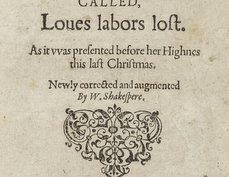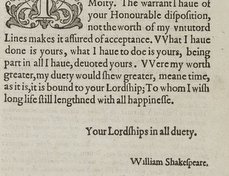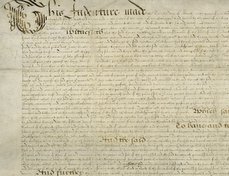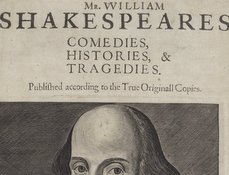From the collections of: THE BRITISH LIBRARY
Terms of use
The British Library has graciously contributed the above images to Shakespeare Documented under a Creative Commons Public Domain Mark.
Copyright status of the manuscript and unpublished Materials: The 1988 Copyright, Designs and Patents Act (as amended) states that unpublished literary and artistic works remain in copyright in the UK until at least 31 December 2039. Therefore important parts of the library’s collection remain in copyright, including very old manuscripts. However for unpublished material created many centuries ago and in the public domain in most other countries, the Library believes this material to be very unlikely to offend anyone. As an institution whose role it is to support access to knowledge, we have therefore taken the decision to release certain digitised images technically still in copyright in the UK under the Public Domain Mark.
Document-specific information
Creator: William Keeling
Title: Dragon: Fragment of journal, William Keeling
Date: March 12, 1607- April 17, 1607
Repository: The British Library, London, UK
Call number and opening: IOR/L/MAR/A/III, wrapper & fol. 1r-v
View online bibliographic record
Zoë Wilcox, "Fragment of Captain William Keeling's journal: Hamlet and Richard II possibly performed at sea," Shakespeare Documented, https://doi.org/10.37078/59.
British Library, IOR/L/MAR/A/III. See Shakespeare Documented, https://doi.org/10.37078/59.
According to extracts published in the 19th century purporting to be from the journal of Captain William Keeling of the East India Company, Shakespeare’s Hamlet and Richard II were performed on Keeling’s ship, the Red Dragon (also known as Dragon) in 1607. Keeling commanded the company’s third voyage to the East-- the Red Dragon was bound for Banten in Java, Indonesia (then known as Bantam). It is not possible to determine whether the reputed three performances actually took place because only the first page of Keeling’s journal survives today (shown above), the remainder having been lost sometime in the 19th century. If true, the events constitute the earliest known performances of Shakespeare outside Europe and the first recorded performance of Hamlet, though recent scholarship has been skeptical of the accounts’ veracity.
The first published transcription purporting to be from Keeling’s manuscript account of the performances appeared in the European Magazine in December 1825 as the footnote to an article about Hamlet by Ambrose Gunthio:
Sept. 5, 1607. I sent the Portugese interpreter, according to his desire, aboard the Hector, where he broke fast, and after came aboord me, where we had the TRAGEDY OF HAMLET; and in the afternoone we went altogether ashore, to see if we could shoot an elephant.
Sept. 29, 1607. Captain Hawkins dined with me, when my company acted KINGE RICHARDE THE SECONDE.
March 31, 1608. I invited Captain Hawkins to a fyshe dinner, and had HAMLET acted aboord me, which I permit, to keepe my people from idleness and unlawful games, or sleep.
Gunthio’s identity remains a mystery: it has been assumed that the name is a pseudonym, leading to later speculation that the article was the work of a forger. Regardless, Gunthio’s footnote went unnoticed by Shakespeare scholars. Thomas Rundall’s Narratives of Voyages Towards the North West published by the Hakluyt Society in 1849, eventually brought the extracts to public attention, although even then the Shakespeare entries were not remarked upon for a further 16 years. Among discrepancies between the two publications including spelling, phrasing and the date of the final entry, Rundall, who was a clerk of the East India Company, included an additional diary entry in Voyages Towards the North West not found in Gunthio’s:
1607.
September 4. [At Serra Leona.] Towards night, the kings interpter came, and brought me a letter from the Portingall, wher in (like the faction) he offered me all kindly services. The bearer is a man of maruailous redie witt, and speakes in eloquent Portugues. He layt abord me.
5 [September 1607]. I sent the interpreter [Fernandez], according to his desier, abord the Hector, whear he brooke fast, and after came abord mee, wher we gave the tragedie of Hamlett.
30 [September 1607]. Captain Hawkins dined with me, wher my companions acted Kinge Richard the Second
31 [September 1607]. I envited Captain Hawkins to a ffishe dinner, and had Hamlet acted abord me: wch I p’mitt to keepe my people from idleness and unlawfull games, or sleepe.
Some experts have found the discrepancies as proof that Gunthio and Rundall discovered and transcribed the journal entries independently of each other. Others think that both reports could be based on the same forged record. Sidney Lee first claimed this in his Life of Shakespeare (1898), which included the references in a list of “Forgeries promulgated by [John Payne] Collier and others.”
Scholars suspecting forgery view the loss of the Keeling journal suspiciously. An 1822 catalogue of “Damaged Papers” held at East India House lists the first leaf of Keeling’s log as a “Remnant.” This has been regarded as evidence that Gunthio could not have been transcribing from the full journal in 1825 as the vast majority was already lost. However, it is well known that the East India Company’s records were in great disarray in the early 19th century, and papers were dispersed between many locations-- including departmental offices and private residences. In 1900, William Foster of the India Office defended the authenticity of the extracts on these grounds. In 1923, scholar Frederick Boas theorized that the rest of Keeling’s journal could have been extant in 1825 but kept elsewhere from the damaged fragment (possibly with the other ships’ logs held in the Marine Records). According to Boas, “Rundall himself had been allowed to keep documents in his own house for many years, and some of them were missing after his death.” (Shakespeare and the Universities, p. 89) The Keeling journal could have been disposed of between 1858 and 1867 when the Company carelessly sold off tons of records as wastepaper.
The remaining surviving journals from the Third Voyage offer no corroborating evidence of the shipboard performances, as they make no mention of the plays. Like the Keeling fragment, these journals are held in the British Library and they comprise accounts from an anonymous individual on board the Dragon’s sister ship the Hector (IOR/L/MAR/A/IV), merchants John Hearne and William Finch on board the Dragon (IOR/L/MAR/A/V), a 1609 copy of the journal of Anthony Marlowe on board the Hector (Cotton MS Titus B VIII), and a contemporaneous abstract of Keeling’s journal (IOR/L/MAR/A/VI).
Though a lack of evidence cannot be considered proof that the performances did not take place, Hearne and Finch’s journal is perhaps the most problematic source, since it offers a detailed and comprehensive log of the Dragon’s voyage including an entry for September 5, 1607 when the first performance of Hamlet supposedly took place. There is, however, one genuine record of a shipboard performance on an East Company voyage: in 1610 Thomas Love recorded that “a play was play’d” aboard the Trades Increase (IOR/L/MAR/A/X). Love’s record makes the alleged Dragon performances appear more plausible than they otherwise would.
When Gwynne Blakemore Evans of the University of Illinois brought the Gunthio footnotes to public attention in 1951, he was satisfied that the existence of two different published accounts confirmed the truth of the shipboard performances. He found the reference to the elephant hunt quoted by Gunthio (but not by Rundall) to be “alone sufficient” to corroborate the accounts as the hunt is also mentioned in Hearn and Finch’s journal. In 2004, Arthur Freeman and Janet Ing Freeman published a study of John Payne Collier’s forgeries. They agreed with Evans’ assessment and included the Keeling entries in an appendix titled “Red Herrings,” adding that Collier had never commented on them in print and was not known to have ever consulted records in the East India Office. However, more recently, Bernice W. Kliman firmly argued that the extracts are a hoax, and moreover a hoax instigated by John Payne Collier. She re-examined the Gunthio article in 2011, arguing that John Payne Collier most likely wrote the Gunthio piece and possibly duped Rundall by doctoring a genuine record.
Increasing scholarly interest in Shakespeare performance beyond the English-speaking world has revived interest in the Keeling journal debate. Many aspects of the story have been discussed including how the alleged performances could have been staged, the accessibility of Shakespeare’s texts on board ship, whether Hamlet was performed for the entertainment of African guests, and the prejudices that led to disbelief in these accounts of amateur performances. As scholar Sonia Massai has remarked, whether the Keeling transcripts derive from genuine records or a 19th century hoax, the interest in them “show[s] how invested Shakespeare scholars have become in finding a memorable point of origin for the phenomenon now known as ‘global Shakespeare’.”
Written by Zoë Wilcox
Sources
Ambrose Gunthio, “A Running Commentary of the Hamlet of 1603,” European Magazine (December 1825): 339-347.
Frederick S. Boas, Shakespeare and the Universities (London, 1923): 84-95.
G. Blakemore Evans, Notes and Queries 196 (21 July 1951): 313-15.
G. Blakemore Evans, Notes and Queries 197 (15 March 1952): 127-28, 180-82.
Arthur Freeman and Janet Ing Freeman, John Payne Collier: Scholarship and Forgery in the Nineteenth Century (New Haven, 2004): 2:1039-1040.
Bernice W. Kliman, “At Sea about Hamlet at Sea: A Detective Story,” Shakespeare Quarterly 62 (2011), 180–204.
Sydney Lee, A Life of Shakespeare (London, 1898): 369.
Sonia Massai, “The Wide World: Shakespeare Across the Globe,” in Shakespeare in Ten Acts ed. by Gordon McMullan and Zoë Wilcox (London, 2016).
Thomas Rundall, Narratives of Voyages Towards the North West (London, 1849). Digitized version available via the Hathi Trust Digital Library. <https://catalog.hathitrust.org/Record/100268493>.
Last updated July 11, 2020

